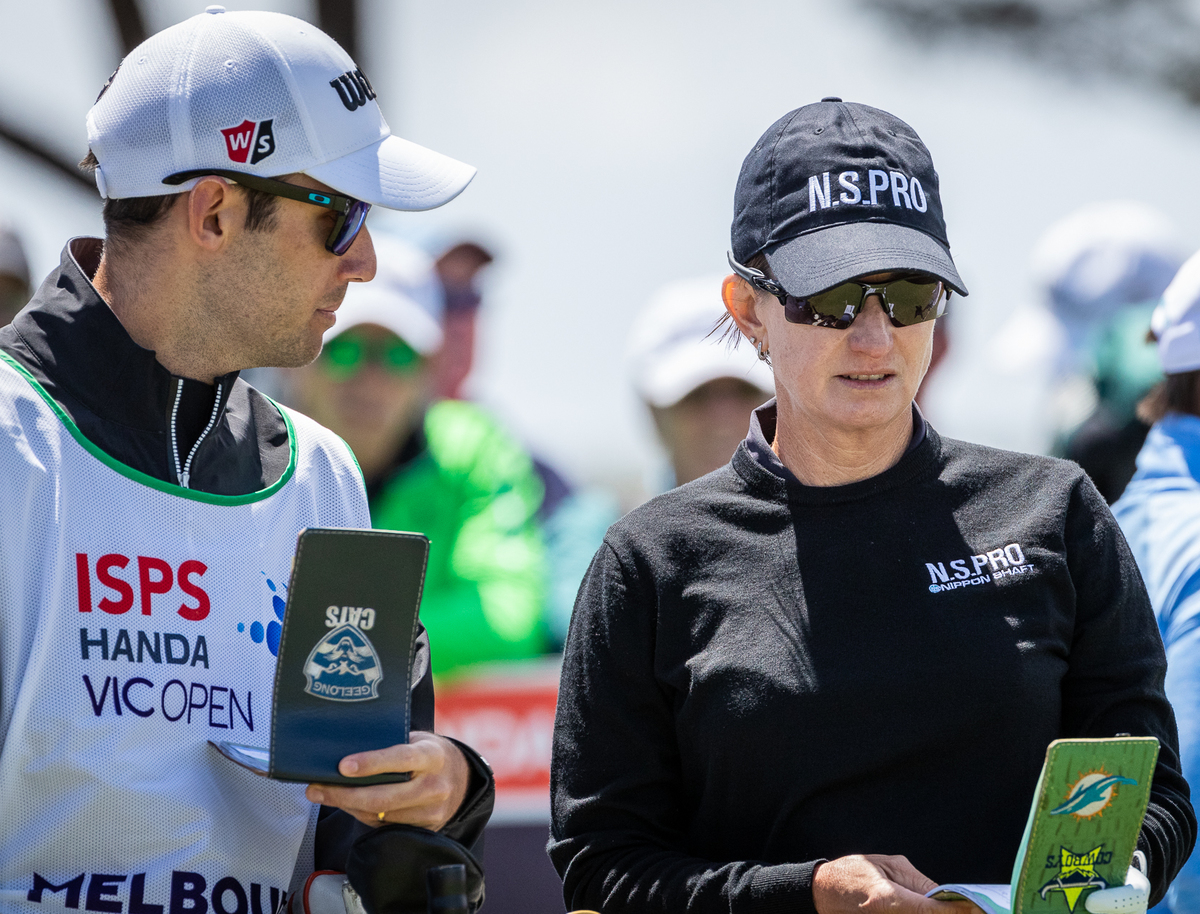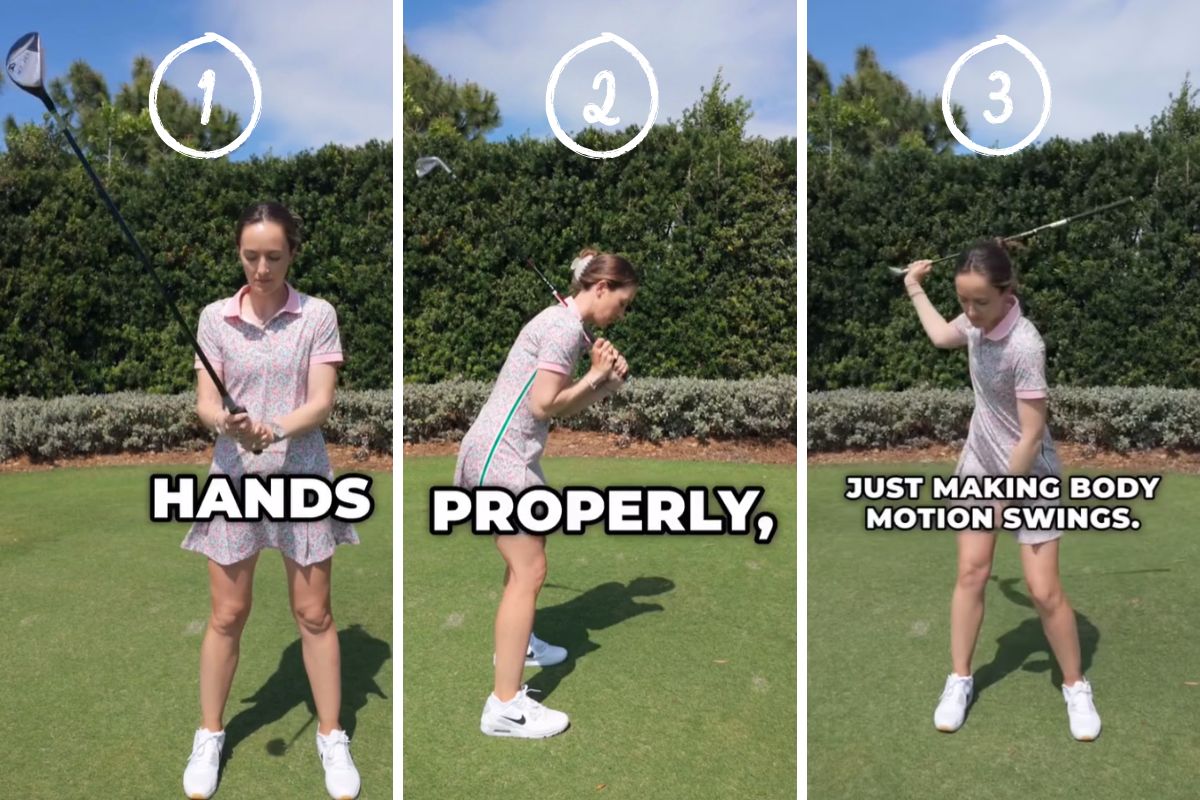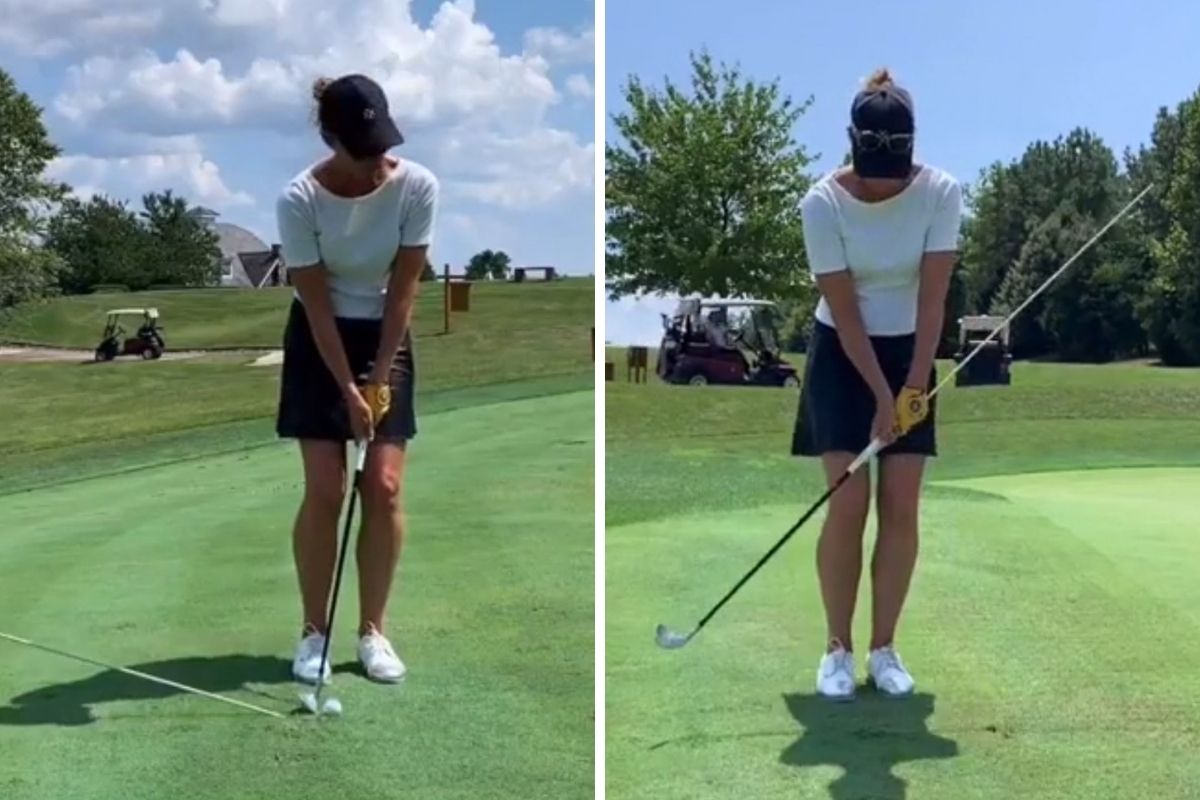I am a firm believer in setting the “intention”, setting a “goal” and believing it is possible to achieve. However, results don’t just appear by wishing or wanting them, they happen by taking action.
Whether or not you want to shave strokes off your handicap, win your next club competition, or even win a big tournament, the following process will enable you to see these goals and aspirations materialize.
There are different ways to achieve the desired results on and off the golf course. The first part of this process is to have an open mind and to accept that steps, action, and commitment are required.
I’d like to share with you my 5-step process. The tools and strategies I used to take me from a struggling professional golfer/part-time waiter to becoming a multiple winner on international tours and the number one female professional in Australia back in the nineties.
What I love about this 5-step process that it gets results on the golf course but can also be applied to many things in your life as well! Have a look to see if you can apply these steps to your work, health, weight loss, relationships, emotional stability, any sport or talent. The steps can be likened to a recipe, as a set of life instructions or simply a process to follow if you want success!
#1Awareness Of What You Are Thinking
Learn to be aware of what you are thinking on the way to the golf course, when you arrive at the course, walking to the first tee, before each shot, after each shot and before and after each round.
What type of things are you saying to yourself? Have you ever thought or said the following?
- After one bad shot – “Oh it’s going to be one of those days”.
- I knew I shouldn’t have come to golf today – “I am playing so badly”.
- When you hit it in the bunker – “I might as well pick up”.
- You get to the 7th hole – “I hate this hole I never play it well.”
- Get to the water hole and say – “I will get out an old ball”.
Do you think this type of thinking or statements are serving you well on the course?
OK, now that you have admitted that you have said some of or all of these types of statements? What then can you do about it?

#2Understand That You Have a Choice
Understand that the mind does not judge what you tell it. The mind believes what you tell it! Therefore, why wouldn’t you want to feed it positive and productive information?
Once you are aware of the thoughts running through your head, you can say: “Oh, that’s one of those thoughts, I choose not to let it be my reality, I will just delete it or let it pass without reacting to it.”
Now that I have deleted it, I can insert a thought that will counteract the negative one and provide me with a real goal to focus on.
After one bad shot – “Oh it’s going to be one of those days”. DELETE. THEN, INSERT – “one bad shot does not make a bad day. I choose to play well now.”
I knew I shouldn’t have come to golf today – “I am playing so badly”. DELETE. THEN, INSERT – “If I concentrate on each shot I will play well today.”
When you hit it in the bunker – “I might as well pick up”. DELETE. THEN, INSERT – “I have hit out of a bunker before I can do it now”.
You get to the 7th hole – “I hate this hole I never play it well.” DELETE. THEN, INSERT – “It’s just another hole, play one shot at a time”.
Get to the water hole – “I will get out an old ball”. DELETE. THEN, INSERT – “The water is not my target, I will focus on the green.”
Be aware also what emotions your thoughts create for you.
For example:
- I can’t play this shot – “fear” – therefore anxiety over the result.
- I am nervous – “worry” about what others think. Creates self- sabotage.
- I am playing so badly at the moment. Justification, low self- esteem – “acceptance of failure”. Are we protecting ourselves so not to feel disappointed or judged?

#3The Importance of a Pre-shot Routine
A pre-shot routine involves the process you go through from the time it is your turn to play, to the time you make your first movement to execute the shot. The routine can involve one or more courses of action including standing behind the ball and visualizing the shot; taking a practice swing: placing the club behind the ball then taking your stance; and then committing to your basic swing thought.
We all have different habits, different movements that we have developed, to prepare to execute the golf shot. Some players simply walk up to the ball and just hit it by only using a simple swing thought. The key, however, is to do the same thing every time. This is crucial.
A repetitive routine creates one set of thoughts which the mind will reproduce, allowing no scope for negative thoughts.
The mind is busy processing the positive swing thoughts and focusing ONLY on the shot at hand.
A pre-shot routine can also relieve nerves. Remember, frequent rehearsal results in improved performance and consistency.
#4Pick a Target to Aim at
If I were playing darts, I wouldn’t just throw the dart at the wall in the hope of hitting somewhere on the board. I would focus on the dartboard itself, and then zoom in on the Bullseye as my specific target. If I were to miss the bullseye, I am confident I would still have hit somewhere within the outer ring.
Similarly, if I stand on the teeing ground and look forward and “just try to hit down there somewhere,” the ball will finish somewhere/anywhere, but not necessarily on the fairway.
Therefore, I must decide on a specific target such as the middle of the fairway, a sprinkler on the left-hand side of the fairway or that brown patch on the right-hand side. Even if my ball doesn’t land on the exact target, it is likely to be in the vicinity and still be in play. Pick a small target, zoom in on a bullseye spot on the fairway, narrow it down.
On every shot, be precise about your target. Think of it as you would when zooming in with a camera lens OR as you would when you crop a photograph. In either process, you are eliminating areas that are not part of your focus.
Often when golfers stand on the tee, they focus on the trees in the rough, the fairway bunkers, the out-of-bounds or the fact that there is a water carry.
If the mind is thinking trees, bunker, water, OB, that thought becomes the focus. It is therefore critical that you choose a small target so that your mind is not concentrating on these unwanted areas.

#5Focus on the Good Shots
You have finished your round, you played OK, maybe not your best but it was a round made up of some good shots and some bad. You walk into the clubhouse and someone asks you “How did you play?”
You immediately respond, “Oh well if it wasn’t for the triple bogey on the 5th, or the out of bounds on the 7th or the 3-putt on the last hole, I would have had a good round.”
Why is it that so many golfers focus their after-round review on the one bad shot or the one bad hole?
Why are we reluctant to say that we played well. that we hit a great drive on the 4th hole, that we sank a 30-foot putt to save par on the 17th or that we holed a bunker shot?
We seem to be more comfortable reliving the bad shots. Perhaps we are uncomfortable recalling the good shots because other players might think we are “big-noting” or are big-headed or over-confident.
As most of us are uncomfortable sharing our good shots. and if you catch yourself doing the same, this is what I suggest you do.
After golf, perhaps when driving home, ask yourself, “What was my best shot today?”
“What did I do that was good out there today?”
Relive the good shots and inwardly celebrate. lt will make you feel better about your golf. It will help you feel like you are doing OK or not playing badly, when you next tee it up.
Reminding yourself of your good shots will build confidence and help you focus on positives rather than negatives. Your mind will remember the visuals of the good shots that you have made your focus.
I believe if YOU commit to these 5 easy steps (repeatedly over and over), you will see instant improvement and consistent results in your golf game.
Be mindful, how you can apply these steps: awareness, choice of what thoughts to take as real for you, have a routine, have a target and focus on the good results, not only to your golf game but you can apply them to other aspects of your life. I hope you have lots of success.
Jenny
Feature Photo: World Golf Hall of Fame member, Karrie Webb at the 2019 ISPS Handa Vic Open. All photos in this article by LPGA Accredited Photographer, Phil Taylor.







